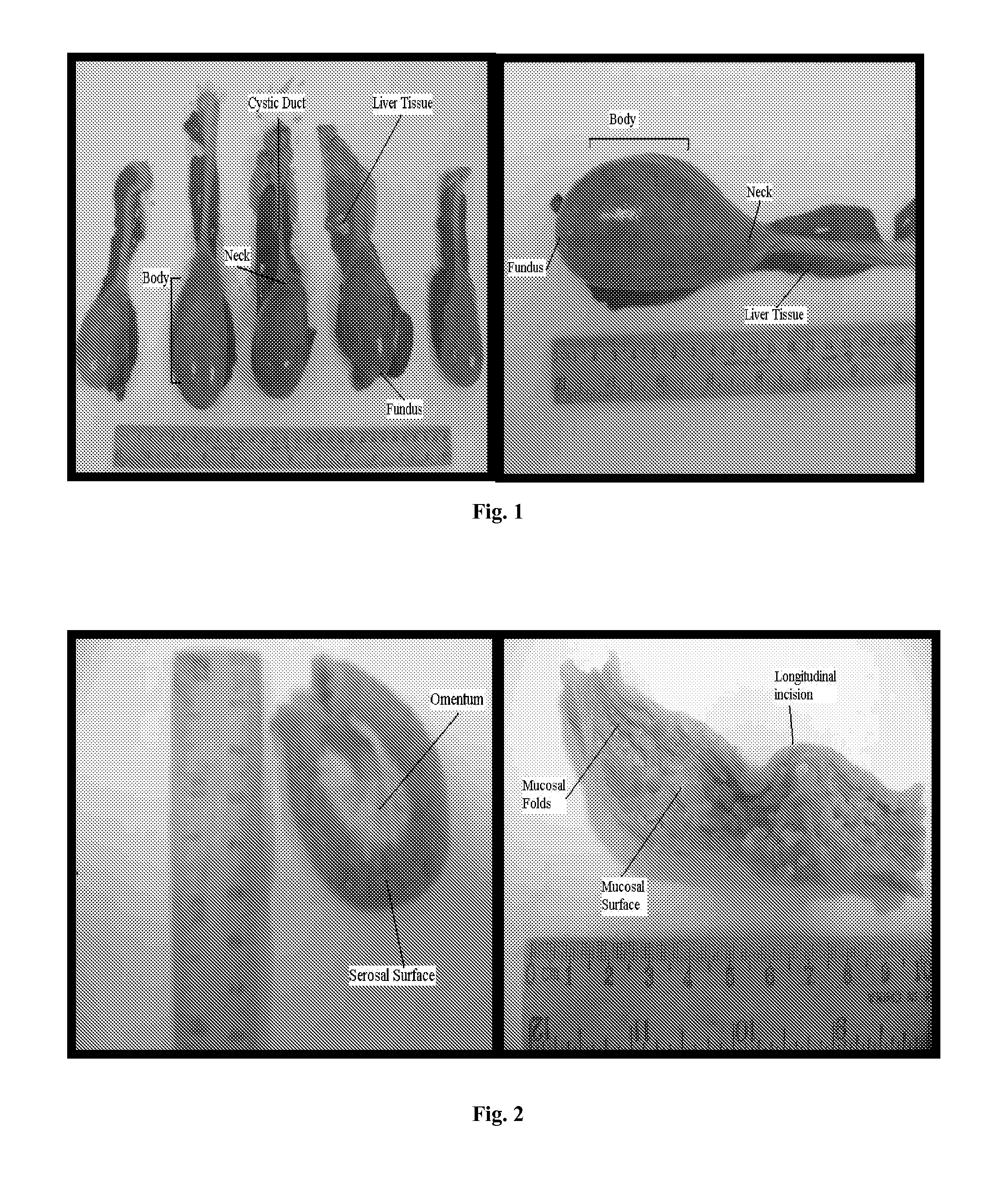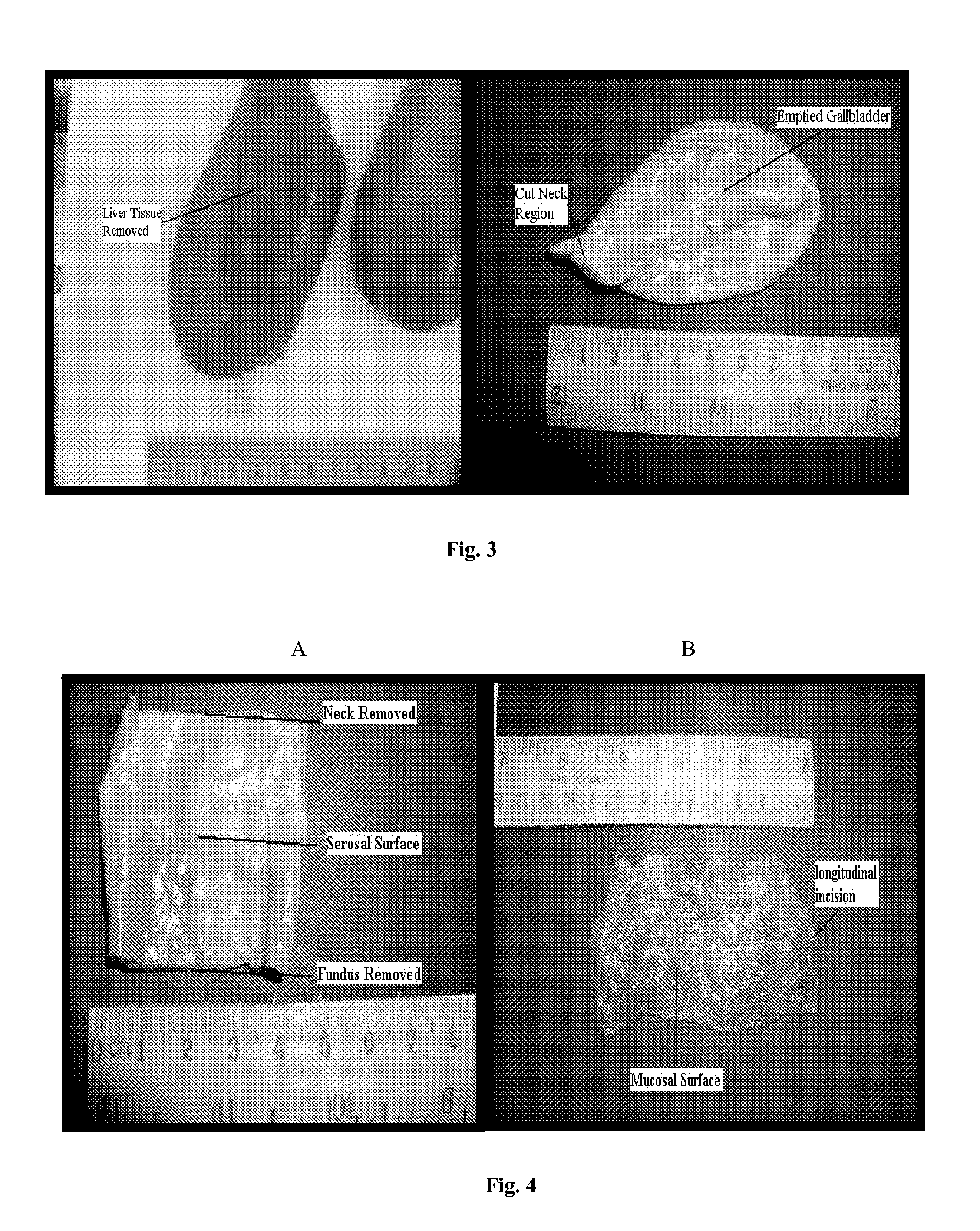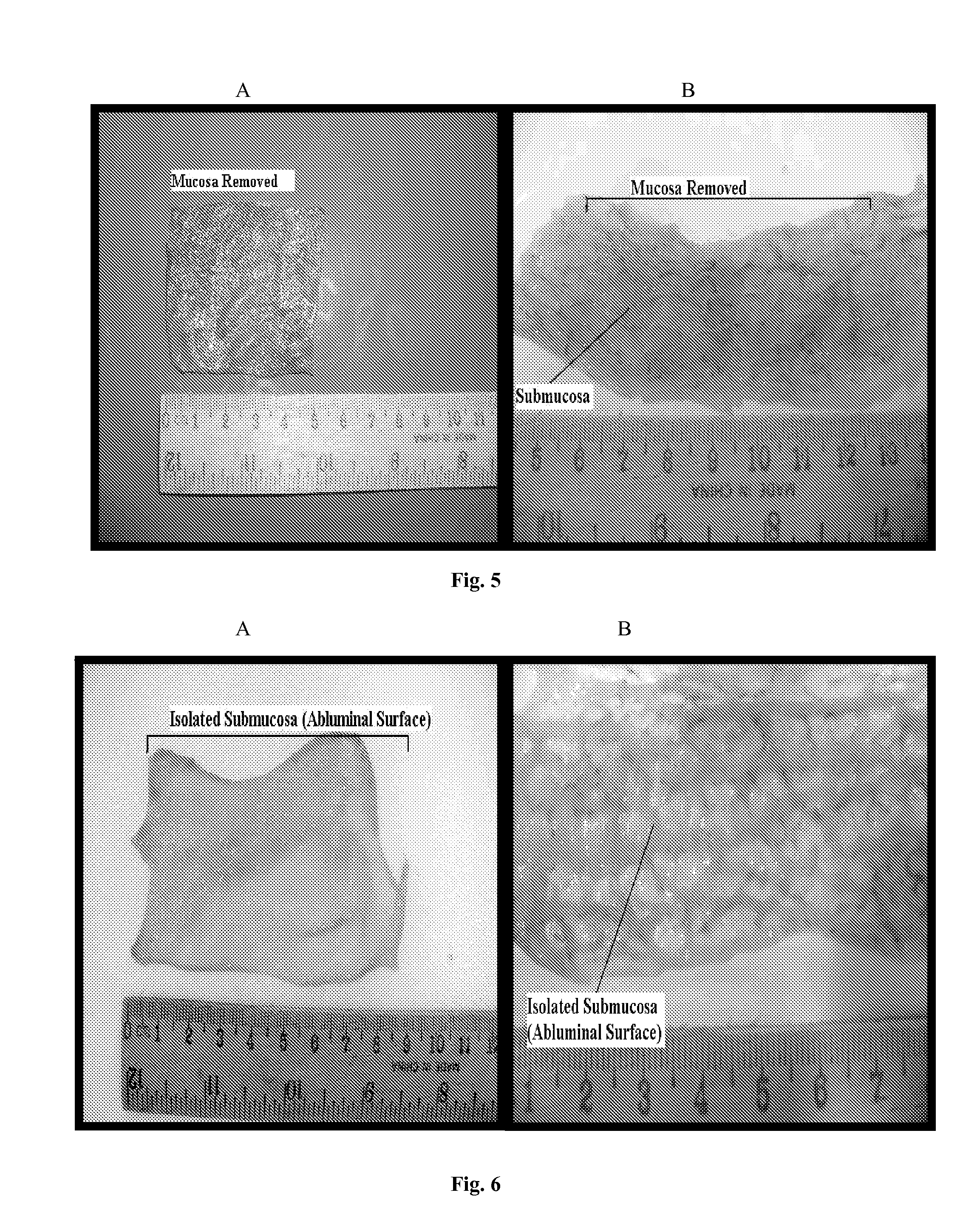Tissue graft scaffold made from cholecyst-derived extracellular matrix
a tissue graft and extracellular matrix technology, applied in the field of bioengineered tissue graft scaffolds, can solve the problems of complex manufacturing, inability to modify as easily, and inability to replace or repair the tissue satisfactorily or within an appropriate time scale, so as to reduce the likelihood of inducing an inflammatory response and improve tensile strength
- Summary
- Abstract
- Description
- Claims
- Application Information
AI Technical Summary
Benefits of technology
Problems solved by technology
Method used
Image
Examples
Embodiment Construction
Materials and Methods
Isolation of Cholecyst Extracellular Matrix
[0073]Cholecyst and small intestine tissue was obtained from market weight pigs, slaughtered at Duffy's Meats abattoir, Gort. Co. Galway. Porcine specimens were fixed immediately post mortem by total immersion in 10% neutral buffered formalin (NBF) for light microscopy and 3% Glutaraldehyde Fixative for electron microscopy. Whole cholecysts were punctured and drained of bile before immersion in fixatives, while small intestinal samples were cut into approximately 10 cm long sections before immersion in fixative. Samples were subsequently transported to a suitable laboratory environment for further tissue processing. Before fixation had fully occurred (2 hours), samples were further processed to allow for total fixation and for the isolation of extra cellular matrix. This process resulted in the procurement of whole tissue and delaminated extra cellular matrix, for light and electron microscopy. Before delamination occur...
PUM
 Login to View More
Login to View More Abstract
Description
Claims
Application Information
 Login to View More
Login to View More - R&D
- Intellectual Property
- Life Sciences
- Materials
- Tech Scout
- Unparalleled Data Quality
- Higher Quality Content
- 60% Fewer Hallucinations
Browse by: Latest US Patents, China's latest patents, Technical Efficacy Thesaurus, Application Domain, Technology Topic, Popular Technical Reports.
© 2025 PatSnap. All rights reserved.Legal|Privacy policy|Modern Slavery Act Transparency Statement|Sitemap|About US| Contact US: help@patsnap.com



